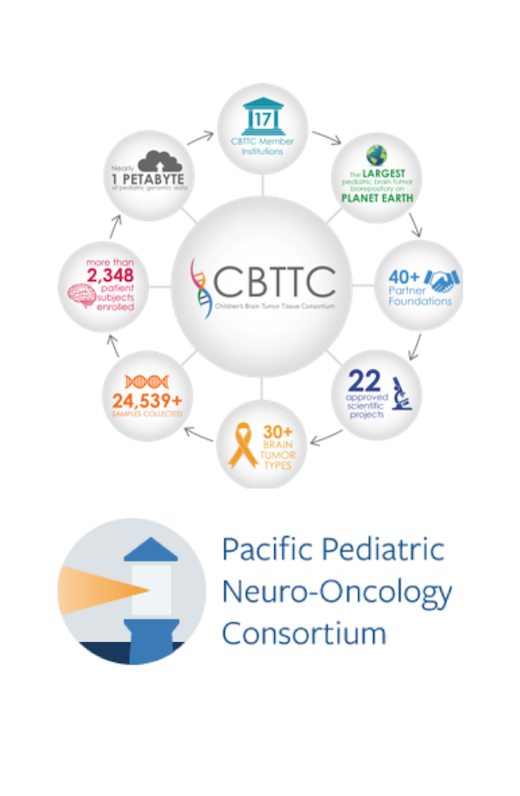Largest Pediatric Brain Tumor Data Set Available in Kids First DRC Portal-title-h1
Largest Pediatric Brain Tumor Data Set Available in Kids First DRC Portal
The Children’s Brain Tumor Tissue Consortium (CBTTC) and the Pacific Pediatric Neuro-Oncology Consortia (PNOC) are dedicated to accelerating new therapeutics for children diagnosed with a brain tumor. To support collaboration and accelerated discovery on behalf of patients, PNOC, CBTTC and their affiliated institutions will be among the first Kids First Commitment Makers’ Consortia to partner with the Kids First DRC and the program’s Kids First X01 investigators and deposit large-scale pediatric brain tumor genomic datasets within Kids First Data Resource Center. Their donation includes whole genome sequencing (WGS) data, RNAseq data, and matched clinical longitudinal data across more than 30 types of pediatric tumors spanning 2336 enrolled subjects and 2959 clinical events and samples. This dataset will be made available for search, download and integrative analysis within the Kids First DRC’s research platforms including cloud-based computational workspaces provided by Cavatica (cavatica.org) and the Kids First Data Resource Portal. For more information on requesting access to these and other Kids First datasets, please contact support@kidsfirstdrc.org.
Dataset Fast Facts:
- Over 1000 subjects with both WGS and RNAseq data
- 2105 RNAseq-only subjects
- Many recurring specimens
- Many subjects with maternal and paternal samples
- Data is being made available in real time with sequencing to be completed by the end of 2018
Children’s Brain Tumor Tissue Consortium (CBTTC) is a collaborative, multi-institutional research program dedicated to the study and treatment of childhood brain tumors.
- 17 primary member institutions
- 48 scientific projects
- Deep Longitudinal Clinical Data
- Linked Biospecimens and Pre-clinical Models
The Pacific Pediatric Neuro-Oncology Consortium (PNOC) was formed to provide children with brain tumors access to innovative treatments through innovative clinical trials.
- 18 member institutions
- Clinical strategies that are based on the molecular and genetic makeup of each tumor
- Therapies aimed at interfering with specific cellular pathways or mutations
